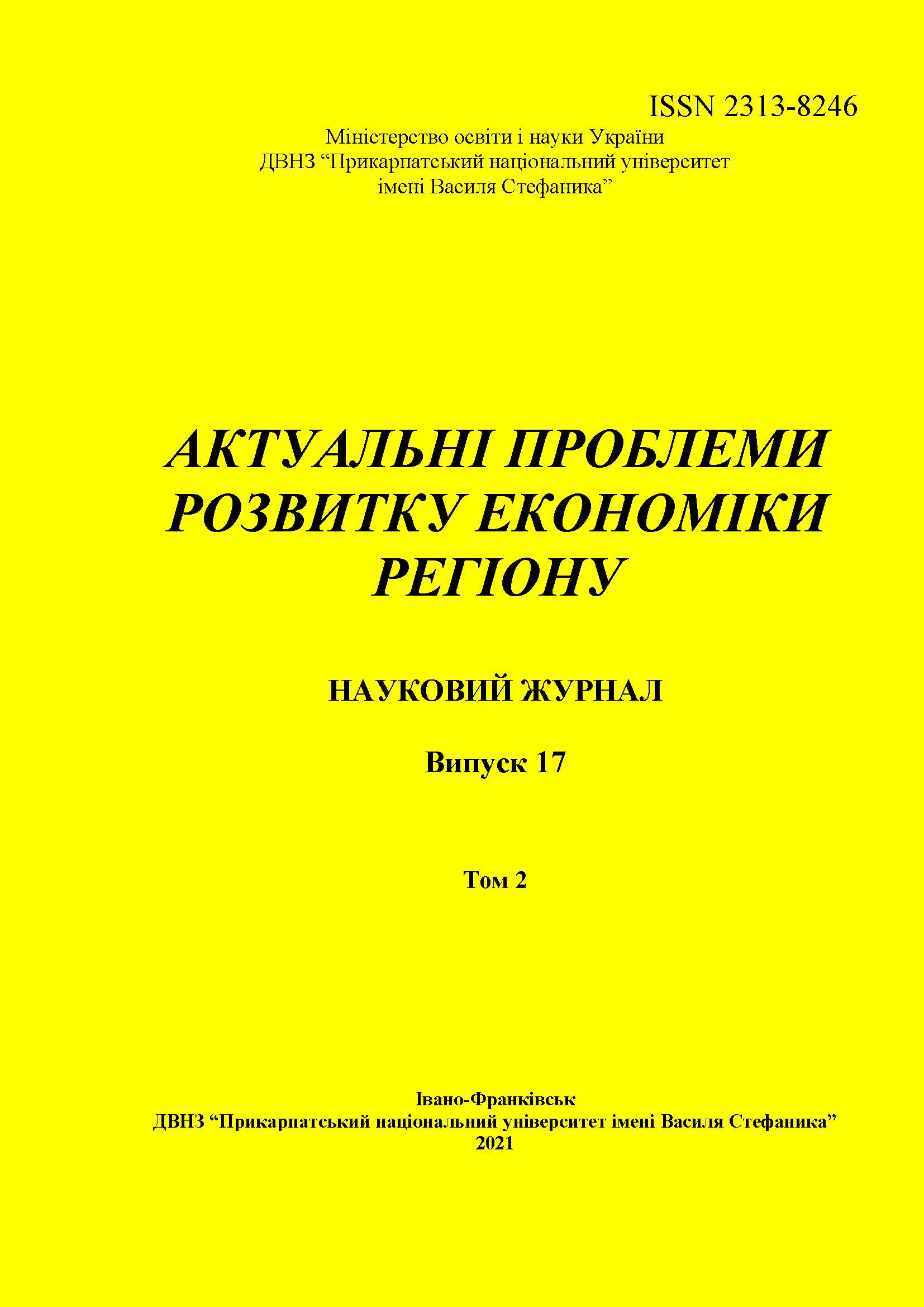"SILVER ECONOMY": SOCIAL ASPECTS AND SUSTAINABLE DEVELOPMENT
DOI:
https://doi.org/10.15330/apred.2.17.227-235Keywords:
silver economy, silver industry, elderly, active longevity, successful agingAbstract
The article is devoted to the study of the essence of the concept of "silver economy" as a new approach to solving the problem of population aging, which is faced by both the world and Ukraine. The methodology of the study were the methods of factor analysis and synthesis, dialectical, logical-semantic, graphic, methods of comparison and generalization.
Traditionally, an aging population is perceived as a financial burden on the economy and a threat to the well-being of future generations. In difficult demographic conditions, the developed countries of the world have begun to implement special policies aimed at supporting the aging population. The UN principles on the elderly are considered, the main thesis of which is to create conditions for maximum self-realization in society, to prevent age discrimination, which together will ensure a decent life for elderly Ukrainians. It is proved that the aging of the population, in addition to the negative consequences, can become a new resource for economic growth of the country by expanding the labor market, increasing consumption and increasing production.
Important economic, socio-cultural and political-legal factors of formation and development of the "silver economy" are considered. It is noted that such a process should take place within the framework of state regulation. Accordingly, the main directions of state policy that will promote the development of the "silver economy" in the country are outlined.
The influence of the "silver economy" on the efficiency of the development of the pension system in the country has been established. It is determined that the pension reform is a method of protecting the sustainability of the pension system by increasing the employment rate of the elderly. It has been proven that in the context of pension reform, "silver age" people have a hidden potential to solve the financial problems of the pension system and can be a source of balancing such a system.
It is concluded that the positive impact of the "silver economy" is possible only if modern society is aware of the need to change attitudes towards the elderly and their full integration into the social and economic life of society.
References
2. Kirnos, I. “Economic activity of the elderly: a variety of perspectives.” Scientific Bulletin of the International Humanities University, no. 25-2, 2017, pp. 72–77.
3. Koval, T.V. “From gerontology to “philosophy of old age.” Eprints, eprints.zu.edu.ua/13088/1/19_kov.pdf. Accessed 18 Sept.2021.
4. Stepanova, O.V. The economy of longevity: new challenges for equality and fiscal sustainability. Mechanisms of reconstructive economic development and social criteria of their efficiency. Monographic collection. Kyiv, 2017, pp. 190–222.
5. Kuzheliev, M.O., and V.V. Fedyna. “Analisis of legislative initiatives concerning the accumulative system of compulsory state pension insurance.” Innovations in science and education: challenges of our time, 2017, рр. 33–38.
6. Strategy Of State Policy On Healthy And Active Longevity Of The Population Until 2022. Verkhovna Rada of Ukraine, zakon.rada.gov.ua/laws/show/10-2018-%D1%80. Accessed 18 Sept.2021.
7. Make the life of the elderly full - UN Principles adopted by the UN General Assembly on December 16, 1991, zakon.rada.gov.ua/laws/show/995_314#Text. Accessed 18 Sept.2021.
8. Lee, D. J. “The policy of the “silver industry.” Power, no. 6, 2007, pp. 86–89.
9. “Silver Economy Study: How to stimulate the economy by hundreds of millions of Euros per year.” EC, ec.europa.eu/digital-single-market/en/news/silver-economy-studyhow-stimulate-economy-hundreds-millions-euros-year. Accessed 18 Sept.2021.
10. “The Silver Economy as a Pathway for Growth, 2015.” OECD, oecd.org/sti/the-silver-economy-as-a-pathway-to-growth.pdf. Accessed 18 Sept.2021.
11. Kuzheliev, М., Posnova, T., Nechyporenko, A., and O. Sokyrko. “Theoretical Aspects of Investing in Human Capital in the Conditions of Formation of the Creative Economy.” Advances in Economics, Business and Management Research, no. 95, 2019, рр. 64–69.
12. Kozlovskyi, S., Bilenko, D., Kuzheliev, M., Lavrov, R., Kozlovskyi, V., Mazur, H., and A. Taranych. “The system dynamic model of the labor migrant policy in economic growth affected by COVID-19.” Global Journal of Environmental Science and Management, no. 6(SI), 2020, рр. 95-106.
13. Halushchak, І., Melnyk, V., Myhovych, T., and M. Zhytar. “Methodical aspects of evaluation of financial architecture of economy.” WSEAS Transactions on Business and Economics, no. 17, 2020, рр. 260–268.
14. A Society for all Ages: Challenges and Opportunities. United Nations Economic Commission for Europe, Edited by Astrid Stuckelberger and Andres Vikat, 2008.
15. Eatock, D. The silver economy: Opportunities from ageing. European Parlament, 2015.
16. Reday-Mulvey, G. Working beyond 60?: key policies and practices in Europe. Geneviève Reday-Mulvey. Hampshire, New York, Palgrave Macmillan, 2005.
17. Feifs, Toms, Weber, Tina, et.al. Eurofond. Role of governments and social partners in keeping older workers in the labour market. Dublin, European Foundation for the Improvement of Living and Working Conditions, 2013.
18. Live longer, work longer. Paris, OECD, 2006.
19. Mainstreaming Ageing: Indicators to Monitor Sustainable Policies. Vienna, European Centre, 2007.
Downloads
Published
How to Cite
Issue
Section
License
- Authors retain copyright and grant the journal right of first publication with the work simultaneously licensed under a Creative Commons Attribution NonCommercial NoDerivs 4.0 Unported License that allows others to share the work with an acknowledgement of the work's authorship and initial publication in this journal.
- Authors are able to enter into separate, additional contractual arrangements for the non-exclusive distribution of the journal's published version of the work (e.g., post it to an institutional repository or publish it in a book), with an acknowledgement of its initial publication in this journal.
- Authors are permitted and encouraged to post their work online (e.g., in institutional repositories or on their website) prior to and during the submission process, as it can lead to productive exchanges, as well as earlier and greater citation of published work (See The Effect of Open Access)


